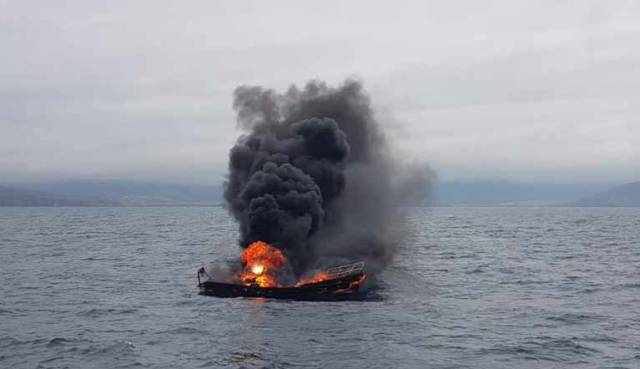Valentia RNLI volunteers launched their all-weather lifeboat yesterday afternoon (Saturday 14 July) to assist a 37ft motor cruiser with three people on board, which had caught fire.
At 1.00pm the Valentia Coast Guard requested Valentia RNLI all-weather lifeboat to assist a motor cruiser on fire four miles south of Dingle harbour. Weather conditions at the time were described as good with clear visibility, force 3-4 with a 3–metre swell.
 Nearby vessels went to the aid of the cruiser upon seeing smoke billowing from it Photo: RNLI
Nearby vessels went to the aid of the cruiser upon seeing smoke billowing from it Photo: RNLI
The motor cruiser was on a passage from Cahersiveen Marina to Dingle harbour when the engine caught fire. Nearby vessels went to the aid of the cruiser upon seeing smoke billowing from it. The three casualties had left their vessel and entered an inflatable craft, prior to being picked up by a local fishing trawler. Arriving on scene our crew members quickly assessed the cruiser which was completely alight. They then proceeded to bring the three casualties on board the lifeboat for a medical assessment. Two of the casualties suffered smoke inhalation and one of which had minor burns.
All were treated on board the lifeboat by our medical trained crew members and were then transported to Dingle harbour were they met by an awaiting ambulance. All three were taken to University Hospital Kerry for further treatment.
Speaking following the call out, Valentia RNLI Coxswain John Patrick Murphy said: ‘The three casualties were very lucky to have suffered only minor injuries. We would remind anyone to ensure they always have a means for calling help if in difficulty or they see someone else in difficulty and to always were a lifejacket.’































































